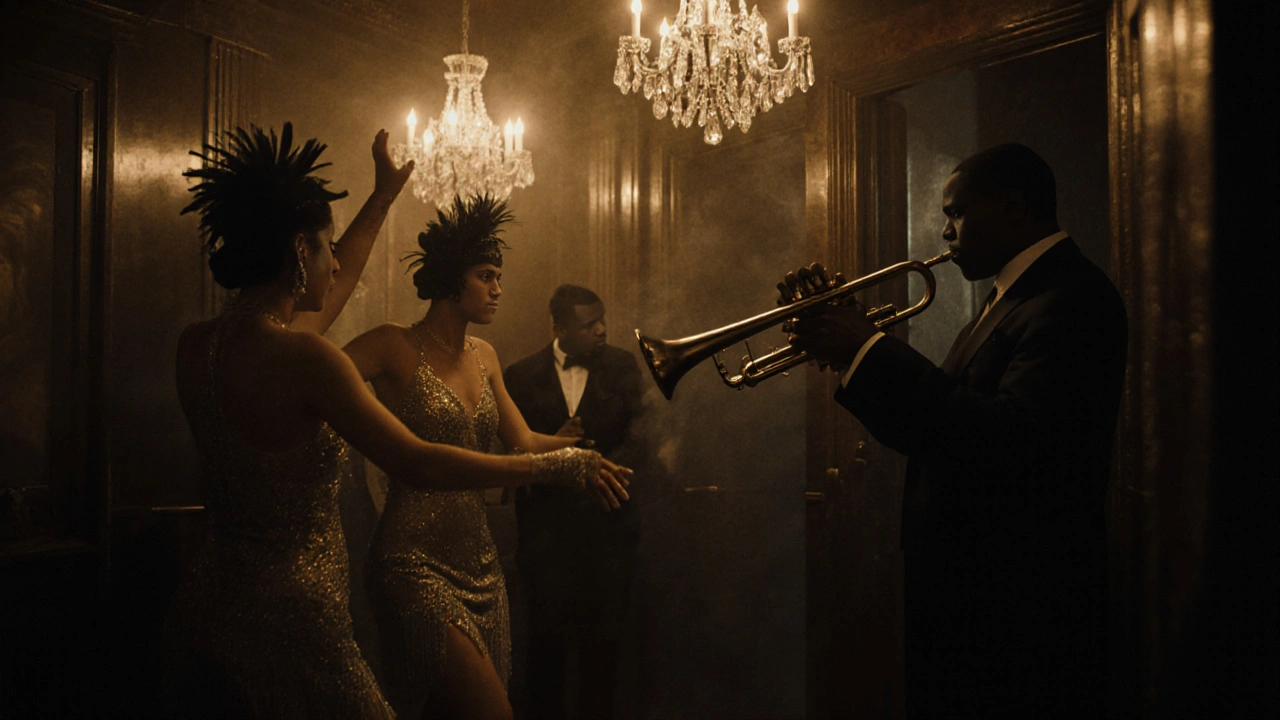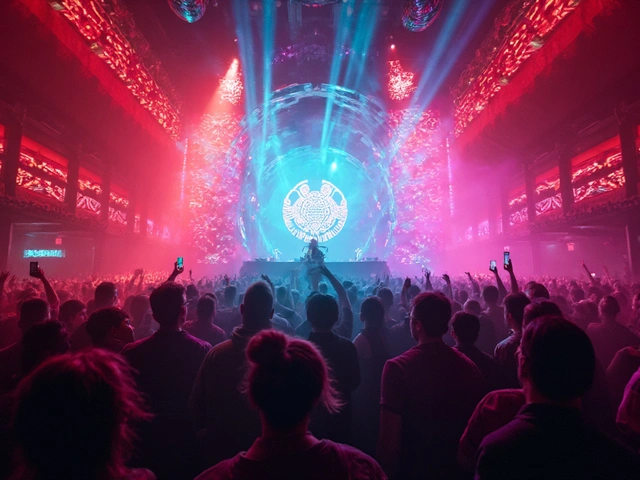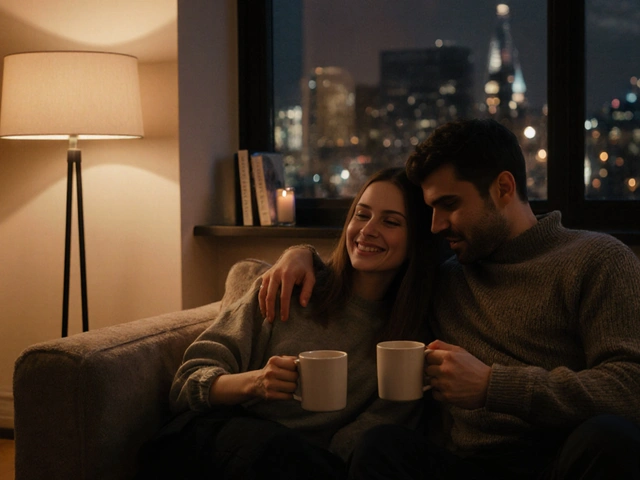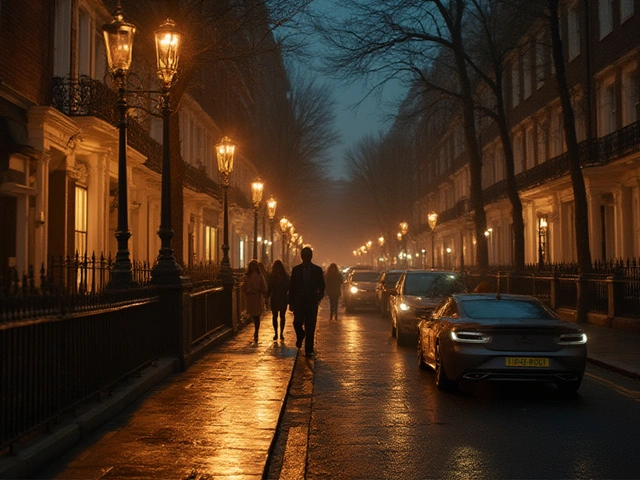London’s dance clubs have always been more than just places to move your feet-they’ve been laboratories of culture, rebellion, and identity. From the smoky basements of 1920s Soho to the neon-lit warehouses of East London, the city’s club scene has mirrored its social shifts, political tensions, and musical revolutions. If you’ve ever lost yourself in a bass-heavy groove at Fabric or danced until sunrise at Printworks, you’ve stepped into a legacy that stretches back nearly a century.
The Roaring Twenties: Jazz, Secret Rooms, and Underground London
In the 1920s, London’s nightlife began to shed its stiff upper lip. Prohibition in the U.S. sent American jazz musicians across the Atlantic, and they found a hungry audience in London’s West End. Clubs like the Café de Paris in Covent Garden became hotspots where flappers danced the Charleston under crystal chandeliers, and Black American performers like Josephine Baker drew crowds that defied class and color barriers. These weren’t just venues-they were social experiments. Many operated as ‘speakeasies’ behind unmarked doors, hidden from police raids and moral crusaders. The rules were simple: if you knew the password, you belonged.
By the late 1930s, the Blitz changed everything. Bombings turned clubs into rubble, but they also forced the scene underground. People danced in air raid shelters, turning wartime dread into collective catharsis. The music? Swing. The energy? Unbreakable. This was the first time London’s dance culture proved it could survive chaos-and thrive.
The 1960s and 70s: Mod, Punk, and the Rise of the Disco Inferno
Post-war London saw youth culture explode. The Mods, with their sharp suits and Vespa scooters, turned clubs like The Marquee on Wardour Street into temples of rhythm. They didn’t just listen to Motown and Northern Soul-they lived it. By the 1970s, the scene fractured. Disco arrived with glitter and sequins, and venues like Studio 54 London (a short-lived but iconic offshoot of the New York original) brought high-glamour to the capital. But while disco glittered, punk roared. At the Roxy in Covent Garden, bands like The Clash and Siouxsie and the Banshees played to mosh pits of leather-clad teens who saw dancing as protest.
These weren’t just parties-they were declarations. The music was raw, the fashion was defiant, and the clubs were the only spaces where working-class kids, queer communities, and immigrants could feel seen. London’s dance floors became the first real melting pots of post-colonial Britain.
The 1980s and 90s: Acid House, Rave Culture, and the Illegal Warehouse Explosion
When the 1980s rolled in, London’s club scene went rogue. The rise of acid house and techno, fueled by Roland TB-303 synths and imported records from Chicago and Detroit, sparked an underground revolution. The government responded with the Criminal Justice and Public Order Act of 1994, which targeted ‘raves’ with music characterized by ‘repetitive beats.’ But that didn’t stop thousands from heading to abandoned warehouses in Peckham, Hackney, and even beneath the River Thames.
Clubs like The Trip in Camden and The End in Waterloo became legendary. You didn’t find them on maps-you found them through word of mouth, flyers taped to phone boxes, or a whispered code on a payphone. The music was loud, the lights were strobing, and the crowd was diverse: students, dockworkers, drag queens, and bankers all danced side by side. This was the moment London’s club culture became globally influential. The UK’s rave scene didn’t just follow trends-it set them.
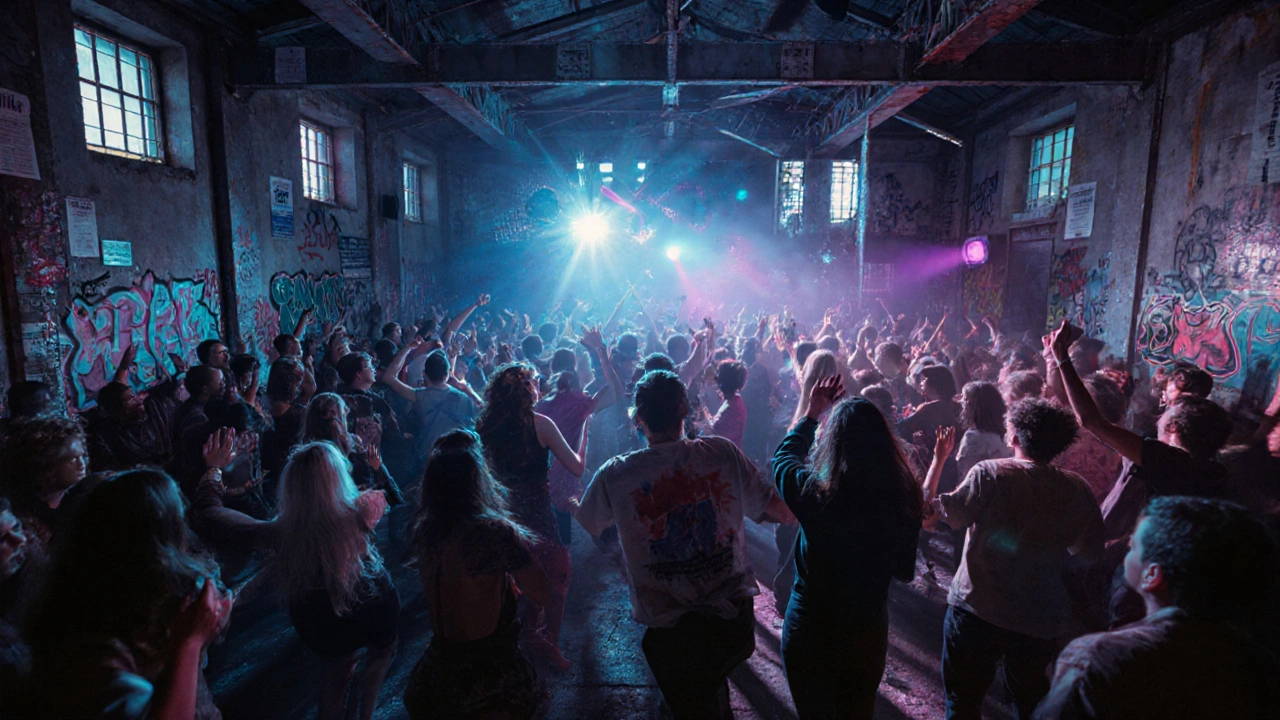
The 2000s to 2010s: Commercialization, Gentrification, and the Fight to Survive
As the millennium turned, London’s clubs faced a new enemy: property developers. The rise of luxury flats in Shoreditch, King’s Cross, and Bermondsey meant that warehouse spaces once used for parties were turned into co-working hubs and penthouses. Fabric, which opened in 1999, became a global icon-until it nearly closed in 2016 after a drug-related death. The city council revoked its license, sparking nationwide protests. Thousands signed petitions. Musicians, DJs, and ordinary clubgoers marched from Trafalgar Square to City Hall. They won: Fabric reopened in 2018, with stricter safety rules but the same soul.
Meanwhile, venues like Printworks in Rotherhithe turned disused printing factories into sprawling, cathedral-like dance temples. With its 10,000-capacity space and world-class sound system, Printworks became the new heartbeat of London’s techno scene. But even here, the pressure mounted. Rising rent, noise complaints from new residents, and licensing restrictions made it harder for clubs to stay open. By 2023, over 60% of London’s independent clubs had closed since 2000, according to the Night Time Industries Association.
2020s: Resilience, Diversity, and the New London Sound
Today, London’s dance clubs are quieter but more diverse than ever. The pandemic wiped out many remaining venues, but it also gave space for new voices to emerge. In Brixton, Moondance hosts weekly Afrobeat nights that draw crowds from South London to Camden. In Peckham, Barbican’s Basement has become a hub for experimental electronic music by Black and queer artists. Meanwhile, The Jazz Cafe in Camden still brings together jazz, soul, and house under one roof-just as it did in the 1990s.
What’s changed? The music. The crowd. The purpose. Today’s clubs aren’t just about dancing-they’re about belonging. In a city where housing is unaffordable and public spaces are shrinking, clubs remain one of the last places where people from all backgrounds can gather without a price tag on their identity. London’s dance floors are no longer just about the beat-they’re about survival.
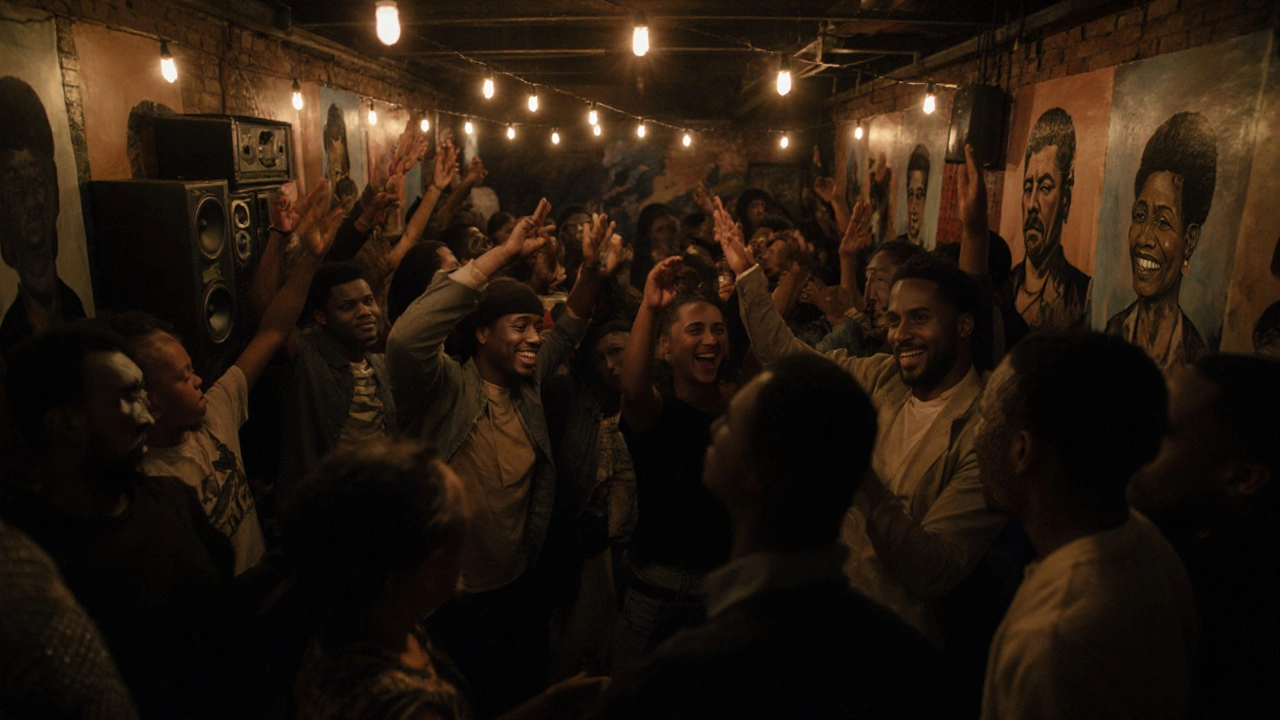
Where to Go Now: A Local’s Guide to London’s Living Clubs
If you want to feel the pulse of today’s London club scene, here’s where to start:
- Fabric (Holborn): Still the gold standard for techno and house. Arrive early-lines form before midnight.
- Printworks (Rotherhithe): For massive, immersive experiences. Check their calendar-guest DJs like Peggy Gou and Carl Cox often appear.
- Moondance (Brixton): Every Friday night, the bass drops with Afrobeat, dancehall, and UK garage. No dress code. Just bring your energy.
- The Jazz Cafe (Camden): Sunday soul nights with live bands. The crowd? Older, wiser, and dancing harder than anyone else.
- Barbican’s Basement (Barbican Estate): Experimental, free-entry nights curated by local collectives. Bring a friend and explore.
Pro tip: Many clubs now operate on a ‘pay what you can’ model for under-25s or on certain nights. Check their Instagram pages-most update last-minute events there. And always carry ID. London’s bouncers are strict, but fair.
Why It Matters: More Than Music
London’s dance clubs have never been just about the music. They’ve been the heartbeat of change. From the jazz clubs that broke racial barriers in the 1920s to the raves that gave voice to a generation in the 90s, these spaces have always been where the margins became the mainstream. Today, as the city grapples with inequality, isolation, and the loss of public space, clubs remain one of the few places where people from different worlds still find common ground on the dance floor.
That’s why saving them isn’t just about nightlife. It’s about preserving the soul of a city that has always danced its way through hardship.
What’s the oldest continuously operating dance club in London?
The Jazz Cafe in Camden, opened in 1990, is one of the oldest still operating with its original ethos. While it started as a jazz venue, it evolved into a multi-genre space and has hosted everything from soul nights to underground techno. It survived the 2000s club closures and remains a cultural anchor.
Are London clubs still affordable for students?
Yes, but selectively. Many clubs offer discounted entry before midnight or on weekdays-often £5 to £10. Moondance in Brixton and Barbican’s Basement have free entry nights. Student IDs are widely accepted, and some venues partner with universities for exclusive events. Avoid Friday nights at major clubs like Fabric if you’re on a budget-tickets can hit £25.
Why do London clubs close so often?
Rising rent, noise complaints from new residents in converted warehouses, and strict licensing laws are the main reasons. Many clubs operate in old industrial buildings that developers want to turn into luxury flats. The 2014 London Night Time Economy Report found that 78% of closures were due to property development, not lack of demand.
Can I still find underground clubs in London?
Absolutely. The underground scene is quieter but alive. Look for pop-ups in East London warehouses, secret events advertised on Instagram via encrypted DMs, or collectives like ‘Soulful Noise’ and ‘The Wicked’ that host unlisted parties. You won’t find them on Google Maps-but you’ll find them if you ask the right people.
What’s the difference between London and other UK club scenes?
London’s scene is more diverse, more experimental, and more politically charged. Manchester has its house legacy, Birmingham its garage roots, but London is the only UK city where you can hear Afrobeat, jungle, techno, and drill all in one week. It’s also the only place where club culture has directly influenced national policy-like the 1994 anti-rave laws and the 2018 Fabric reinstatement.
What Comes Next for London’s Dance Clubs?
The future isn’t guaranteed. But the community is fighting back. Local councils are now required to consult club owners before approving new housing near nightlife zones. Campaigns like ‘Save Our Clubs’ have pushed for tax breaks for independent venues. Some artists are even buying their own buildings-like the team behind Moondance, who purchased their Brixton space in 2022 to keep it safe from developers.
London’s dance clubs have survived wars, recessions, pandemics, and gentrification. They’ve been shut down, rebuilt, and reimagined. And as long as people still show up to dance-to forget, to connect, to be free-they’ll keep going. Because in this city, the music never stops. It just finds a new place to play.

